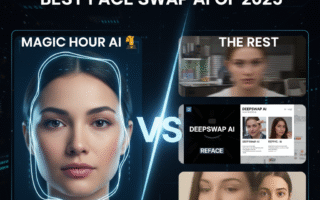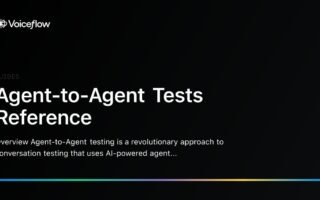When a forest restoration project stalls, it’s rarely the trees that are the problem. It’s the people — the meetings that go in circles, the reports that get delayed, the brilliant ideas that clash rather than connect.
In environmental NGOs, where purpose-driven individuals work under pressure and across disciplines, interpersonal dynamics can make or break a project. Scientists, field officers, communicators, policy experts, and volunteers all bring essential skills — but also very different ways of working. When these styles collide, energy drains away from the mission.
One of the most effective yet underused tools for addressing these human dynamics is the DiSC® behavioral model. While it’s often associated with corporate training, DiSC can be transformative in the non-profit and environmental sectors too. It helps people understand themselves and each other, communicate more effectively, and collaborate across differences — all of which are vital to advancing sustainability goals.
What Is DiSC — and Why It Matters
DiSC is a simple but powerful framework that helps people understand behavioral differences.
The acronym stands for:
- D – Dominance: direct, decisive, and results-oriented; likes to take charge.
- i – Influence: enthusiastic, persuasive, and social; energizes others.
- S – Steadiness: patient, reliable, supportive; values harmony and stability.
- C – Conscientiousness: analytical, precise, detail-oriented; seeks accuracy and logic.
Every person shows a mix of these traits. DiSC doesn’t box people in; it simply reveals our preferences — how we tend to approach tasks, communicate, and respond under pressure.
Modern tools such as Everything DiSC® go beyond a basic self-assessment. They show how each style interacts with others, how to adapt communication, and how to build healthier team cultures.
In a high-stakes, purpose-driven field like environmental work, these insights can make a real difference.
Why Environmental NGOs Especially Need Tools Like DiSC
Environmental NGOs are unique workplaces. They attract passionate, mission-driven people — often with deep expertise in science, advocacy, or community work — who operate in complex, resource-constrained systems. This creates specific challenges that DiSC can help address.
Multidisciplinary Teams
A typical environmental NGO brings together ecologists, communicators, educators, fundraisers, policy analysts, and volunteers. Their vocabularies, timelines, and decision-making styles differ widely. What feels “urgent” to a campaign coordinator may feel “reckless” to a conservation scientist. DiSC provides a shared language to bridge those differences.
Limited Resources and High Pressure
Deadlines, grants, and donor expectations can push people into stress behaviors. Understanding one’s stress triggers — and others’ — helps maintain collaboration even when pressure is high.
Volunteer–Staff Dynamics
Volunteers often have high enthusiasm (I-style energy), while staff may operate with more structured processes (S or C styles). DiSC helps both sides appreciate each other’s approach instead of interpreting differences as disinterest or control.
Cross-Sector Partnerships
Environmental NGOs frequently work with governments, corporations, and communities. DiSC insights can help adapt communication to different stakeholders, improving negotiation, advocacy, and partnership success.
Mission-Driven Passion
Commitment is both an asset and a risk. When people care deeply, disagreements can become personal. DiSC reframes such conflicts as style differences rather than character flaws, helping teams move forward without losing trust.
Seven Ways DiSC Adds Value to Environmental NGO Teams
Better Communication and Understanding
Miscommunication is one of the biggest drains on NGO productivity. DiSC offers a straightforward way to prevent it.
For example:
- A D-style program manager learns to present clear facts and deadlines to C-style scientists, rather than pushing them to “just decide.”
- An I-style campaigner realizes that her enthusiasm can overwhelm S-style colleagues, so she pauses to ask for their input.
- A C-style analyst recognizes that not everyone needs a 40-page report and summarizes findings visually for the I and D types.
When people learn to “speak each other’s language,” collaboration improves dramatically.
Team Mapping and Role Balance
DiSC tools visualize where each member sits on the behavioral map. Seeing this helps teams ask:
- Are we heavy on D and I styles (fast, dynamic) but light on S and C (stability, detail)?
- Do we have enough structure to execute our ideas?
- Which styles should we consciously involve in decision-making to avoid blind spots?
For NGOs, where programs move from planning to community engagement to reporting, having a balanced mix of styles ensures resilience across all phases.
Conflict Prevention and Resolution
Conflict is inevitable — but it doesn’t have to be destructive. With DiSC, disagreements can become learning opportunities.
Instead of personal accusations (“You’re too controlling”), teams can discuss behavioral patterns (“Your D-style drive for results sometimes feels rushed to me”).
Such language depersonalizes tension and makes feedback safer. Over time, teams develop emotional intelligence and psychological safety — two foundations of high performance.
Smarter Role Assignment
Each DiSC style brings natural strengths:
- D: leadership, decision-making, driving results
- i: storytelling, fundraising, relationship building
- S: implementation, consistency, team support
- C: analysis, data quality, policy design
Using DiSC, managers can assign roles that play to strengths and stretch gently into new areas. This reduces frustration, increases satisfaction, and boosts retention — especially important in NGOs where turnover can disrupt continuity.
Leading Through Change
Environmental NGOs operate in a world of constant change — shifting donor priorities, emerging crises, policy transitions, and new technologies like AI or satellite monitoring.
Different styles respond differently to change:
- D wants action now.
- i wants excitement and shared vision.
- S needs reassurance and clear roles.
- C needs process and data.
A leader who understands these differences can communicate change in four ways simultaneously: urgency for D, enthusiasm for I, reassurance for S, and clarity for C.
This inclusive communication keeps the entire team aligned and motivated during transitions.
Leadership Development and Coaching
DiSC is widely used in leadership programs because it helps leaders answer the hardest question: How do others experience me?
For NGO leaders — often experts turned managers — this insight is critical. They learn:
- How their default behavior (e.g. fast decisions, detailed analysis) affects others.
- How to adapt style to get the best out of different people.
- How to give feedback, resolve tension, and build trust intentionally.
Leaders who model adaptability create cultures where difference is appreciated, not avoided.
Sustaining Team Culture
Perhaps the biggest long-term value of DiSC is creating a shared behavioral language. Once a team has that, it can sustain learning without constant external facilitation.
- Teams start meetings by checking “Which DiSC energies do we need today?”
- Colleagues give each other style-aware feedback (“Could you give me the data view, C-style?”).
- New hires receive DiSC profiles as part of onboarding.
- Posters and visuals keep the concept visible in offices or online workspaces.
This ongoing reinforcement turns DiSC from a one-time workshop into an organizational habit.
How to Implement DiSC in an Environmental NGO
A successful DiSC rollout follows several key steps.
Step 1. Secure Buy-In and Clarify Purpose
Start with leadership. Explain that DiSC is not a personality test but a collaboration framework. Emphasize that no style is “better” and that diversity of styles increases resilience.
If people worry about labeling, assure them that DiSC is descriptive, not prescriptive. The goal is awareness and adaptation, not categorization.
Step 2. Prepare Participants
Before the workshop, share materials explaining the basics. Invite participants to reflect on current communication challenges or team frustrations. Setting this intention increases relevance and engagement.
Step 3. Conduct Assessments and Gather Insights
Participants complete their online DiSC assessments. The facilitator compiles individual reports and a team map, showing collective strengths and gaps.
At this stage, it’s essential to highlight confidentiality and respect. No one should feel exposed or judged.
Step 4. Facilitate the Workshop
A typical DiSC session (2–4 hours) includes:
- Introduction to the DiSC model
- Review of personal profiles and reflection
- Interactive exercises or role plays
- Presentation of the team map
- Discussion on communication and collaboration challenges
- Development of concrete action commitments
The session should feel practical and safe, mixing learning with humor and empathy.
Step 5. Reinforce and Follow Up
DiSC is most powerful when reinforced over time. After the initial workshop, NGOs can:
- Integrate DiSC reflections into regular meetings
- Display visuals summarizing styles
- Pair people with complementary styles for mentorship
- Offer refresher sessions every 6–12 months
Consistency keeps insights alive and prevents relapse into old habits.
Step 6. Scale Across the Organization
Once the pilot team sees results, extend DiSC to other departments — fundraising, communications, field teams, or even external partners.
Some NGOs certify internal trainers or HR staff to run ongoing sessions. This creates long-term sustainability and reduces dependency on outside consultants.
Case Studies and Scenarios
Bridging Scientists and Communicators
A conservation NGO in Latin America faced constant friction between its science unit (C/S styles) and its outreach team (I/D styles). Scientists complained that communicators oversimplified; communicators said scientists “blocked progress.”
After a DiSC workshop, both sides realized these were style clashes, not incompetence. They agreed on a new workflow: scientists produce concise “field story summaries” alongside technical reports, and communicators include scientists in campaign briefings. Within months, project turnaround improved by 30%.
Managing Volunteer Energy
An advocacy NGO in Europe relied on volunteers to run awareness events. Staff (mostly S/C styles) struggled with volunteers (mostly I/D) who changed plans last minute. DiSC helped both sides understand motivations: volunteers wanted autonomy and visibility; staff needed structure and accountability.
They created a “flex plan” allowing creative freedom within agreed boundaries. The result: higher volunteer retention and fewer last-minute crises.
Leadership Transition in a Conservation Network
When a long-time director (S style) retired, a new D-style leader took over, pushing aggressive timelines. Staff felt overwhelmed and unappreciated. Through DiSC coaching, the new leader learned to adjust his communication — providing rationale, recognition, and space for discussion. Within six months, morale improved, and the organization exceeded its project targets.
Measuring the Impact of DiSC
To ensure DiSC creates tangible value, NGOs can track indicators such as:
- Employee and volunteer satisfaction surveys (before and after workshops)
- Reduction in conflict mediation cases or turnover
- Improved collaboration scores in project evaluations
- Faster decision-making or reduced delays
- Higher stakeholder satisfaction (external partners notice smoother coordination)
Measurable improvement strengthens the case for continued investment in behavioral development.
Common Pitfalls — and How to Avoid Them
Labeling or Stereotyping
DiSC is a guide, not a box. Avoid phrases like “You’re such a C” or “He’s too D.” Use style as a lens for empathy, not judgment.
Using DiSC for Hiring or Evaluation
DiSC is not a selection tool. Its value lies in development, not screening. Misuse can erode trust.
Treating It as a One-Off Event
A single workshop will create awareness but not sustained change. Plan reinforcement activities.
Ignoring Cultural and Language Context
In multicultural NGOs, adjust metaphors and examples. Behavior norms differ across regions.
Poor Facilitation
Choose trained facilitators who understand NGO dynamics, not just corporate settings. The emotional tone of environmental work requires empathy and authenticity.
Integrating DiSC Into the Broader Mission
Behavioral awareness may seem secondary to biodiversity or climate policy, but it’s deeply connected. Teams that communicate well achieve environmental impact faster — they coordinate fieldwork, negotiate with stakeholders, and advocate effectively.
Investing in DiSC is thus not “soft skills training”; it’s capacity building for sustainable impact. NGOs that understand this see it as part of their organizational resilience strategy.
Working With Expert Partners
Introducing DiSC is easier — and more effective — with experienced facilitators who understand both change management and NGO culture.
For example, IPB Partners, a European consulting and training organization, integrates DiSC with leadership development, communication workshops, and cultural transformation initiatives. Their approach helps teams translate behavioral insights into everyday practice, ensuring long-term value rather than a one-time experience.
Partnering with professionals allows NGOs to:
- Customize DiSC sessions for mission and context
- Train internal champions for sustainability
- Integrate behavioral insights into leadership pipelines and strategic planning
- Measure outcomes and report on the human side of impact
The Human Dimension of Sustainability
At its core, sustainability is about relationships — between people and nature, but also among people themselves. Environmental change requires collaboration across boundaries: science and policy, communities and institutions, generations and ideologies.
Tools like DiSC remind us that transformation begins with self-awareness. When NGO teams learn to understand and value different working styles, they model the very adaptability and empathy that our planet needs.
Final Thought
A reforestation project can plant a million trees, but it takes self-aware, cohesive teams to keep those forests alive.
DiSC is not just a management tool — it’s a language for empathy, alignment, and resilience.
For environmental NGOs striving to create lasting impact, that’s not a luxury. It’s part of the mission.




